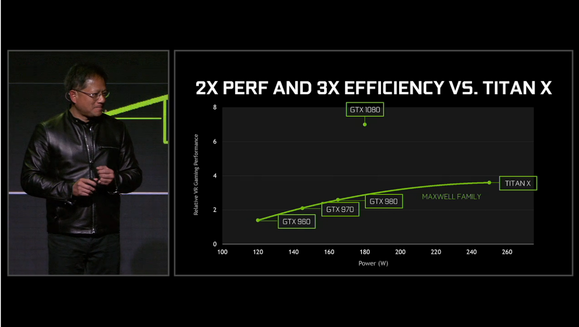NVIDIA GeForce GTX 1080 and 1070 are the most powerful consumer GPUs in the world: period.
NVIDIA has just announced its two latest monster GPUs, as the most powerful consumer graphic cards in the world, and according to PCWorld, we can take that statement to the bank.

Hardcore gamers have been salivating over what has been described as “...the largest chip project endeavor in the history of humanity...”. The budget used to develop the technology for the two graphic cards, spent across a four-year span, has been estimated as sufficient to send a manned spacecraft to Mars... in style.
Faster than two GTX 980 in SLi mode. Faster than a Titan-X. Freezing cold, and incredibly overclockable... but can you afford it?
We are not dancing around the fact that the most powerful GPU in the world has got to be on the pricey side, and it is, but not as pricey as you may think, in fact the GTX 1080 is expected to hit the shelves at $600, only a couple of hundred dollars higher than its predecessors, while the GTX 1070 can be had for as low as $380.
Not just raw power
The 1080 and 1070 are fitted with 8GB of GDDR5X RAM, a suped-up version of GDDR5 memory, which can be clocked to reach 10Gbps, while the GPU itself has been clocked up to 2,114MHz for good measure.
All this power is expected to require one heck of a liquid cooling system, instead, its 14nm architecture allows the GPU to stay at a cozy and cool 67 degrees Celsius.
The GTX 1080 is powered by a single 8-pin power connector, and supports HDMI 2.0B and DisplayPort 1.4. Also,it is said to support up to 16 viewpoints, including regular displays, and VR headsets, thanks to a new technology called “Simultaneous Multi-Projection”, designed to improve how games look on multiple displays.
Game is on, AMD.
AMD may still have a few aces up it sleeve, with its own Polaris GPU, which promises to deliver high end performance in a small package, but can it hold its own against a high performance computing device maker who spells its name in as many capital letter it wants, just because it can?
With the 14nm barrier shattered, and the 10nm ceiling fast approaching, and looking just as frail (thanks, IBM), AMD has some work to do this year, but it won't come without some heavy backing from Apple, granted that the rumors of future Polaris powered MacBooks are true.